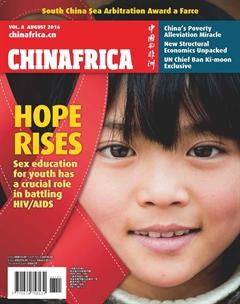Media Watch
TROUBLED WATERS Oriental Outlook July 1
the nine provinces and autonomous regions along the yellow River have been engaged in a heated battle for a larger share of the waters.
the shortfall between the rivers water supply and the regions demand has become increasingly serious. since the late 1990s, the demand has increased by 4 billion cubic meters. in contrast, the runoff volume of the river has shrunk from 58 billion cubic meters 20 years ago to 53.5 billion cubic meters. the riparian provinces and regions have to hold a meeting every year to allocate the water.
water is a crucial natural resource. some provinces had pinned their hope on the western route of the south-to-North water diversion Project, the massive program to divert the yangtze Rivers waters to north china. however, this route, meant to channel water from the upper reaches of the yangtze to the upper reaches of the yellow River to address water scarcities in northwest china, has been shelved.
one possible solution may be to restrict the construction of new industrial projects in areas with inadequate water. the Ministry of water Resources and the National development and Reform commission are drafting a guideline stipulating that new industrial parks or bases will not be approved in areas where water resources are insufficient.
CREATING “SPONGE CITIES”Shanghai Daily July 11
china wrestles with the dual challenge of water scarcity and urban flooding - problems that have been magnified by this summers heavy rainfall. To address the flooding, it is building“sponge cities” to absorb excess water through upgraded sewerage systems, wetlands, and permeable public spaces.
Pingxiang in southeast chinas Jiangxi Province was chosen by the central Government as one of the 16 pilot cities for the project in April 2015. on June 14, the city experienced one of its heaviest rainfalls this year, putting its new “sponge” facilities to the test. the Jinluofeng Park was once among the spots vulnerable to flooding. However, it was not water-logged during the recent rains, thanks to the water-permeable bricks installed in the ground.
According to a timetable released by the chinese Government last october, 20 percent of chinas cities will have modern sewerage systems and other infrastructure allowing efficient rainwater absorption by 2020. the number will rise to 80 percent by 2030.
since the cities are already designed and built, improving sewerage systems, increasing green spaces and creating permeable road surfaces would come at a high cost. experts suggest governments attract private capital and cities integrate the program with urban planning, making sure their new development does not stand in the way of building “sponge” facilities.
FOR A ROSIER JOB MARKET Outlook Weekly June 20
while the demand for labor in traditional industries is shrinking amid the growing downward economic pressure in china, such demand in emerging industries, by contrast, is increasing. to stabilize employment, the government should improve the quality and efficiency of its services for job seekers, especially college graduates, migrant workers returning home to look for work, and people who find it difficult to get work.
some areas are offering incentive policies such as reduced taxes to encourage returning migrant workers to set up their own businesses. More support in funding and technology should be offered by local governments. For those having difficulty in finding employment, such as workers laid off from traditional industries undergoing upgrading and transformation, necessary technical training should be provided to help them secure new jobs.
Full employment is essential for the improvement of living standards. so government departments should make efforts to ensure employment opportunities.
MENTOR OF MINDS China Newsweek July 4
the university of science and technology of china (ustc) seems to be too modest for a productive higher-learning institution. Known as the Massachusetts institute of technology of china, it has nurtured a bunch of experts on science and technology (s&t), education, business and other fields. Many Chinese professors of world-renowned universities such as harvard received their education at the ustc.
the ustc was established in 1958 to create competent s&t personnel for china. From student admission to faculty selection and hiring, it prioritizes its overall performance.
Giving importance to basic courses, a ustc tradition, lays a solid academic foundation for students and influences the way they perceive and handle things. designing special classes for gifted young people is also part of the schools education system. through all these efforts, the ustc enables its students to shoulder responsibility for chinas economic and social development, pass on the fine Chinese cultural and moral heritage, and lead along the path of s&t progress.
chinese President Xi Jinping expressed his high expectations for the ustc during his visit to Anhui Province in April. he encouraged the institution to contribute more to chinas modernization and attain further achievements in education and innovation.

